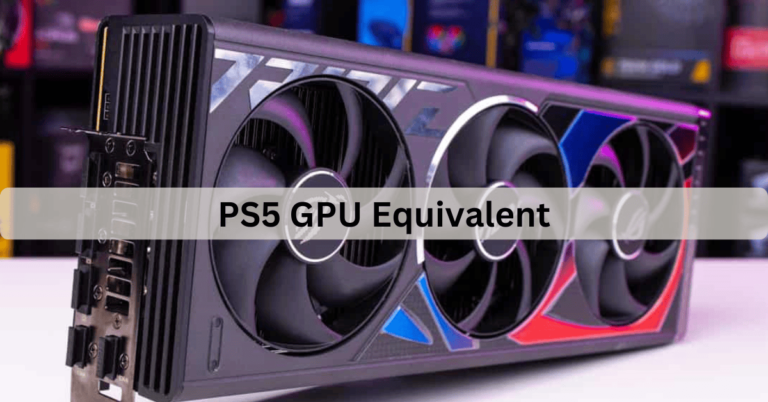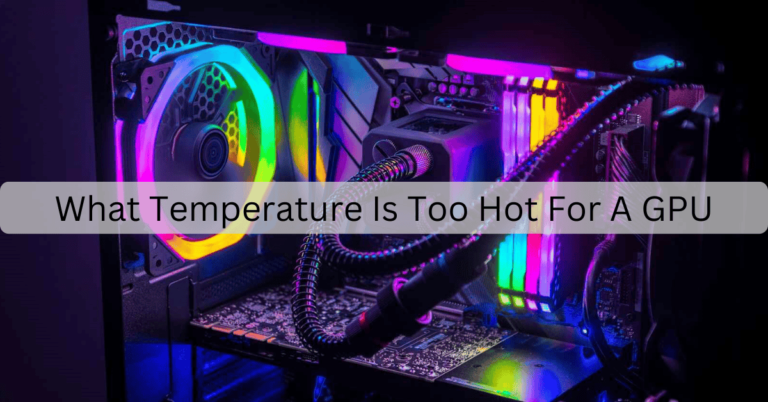Is 60 Degrees Celsius Hot For A GPU – Expert Advice!
As a gamer, I’ve often wondered if 60°C is too hot for my GPU. After testing different cooling methods, I can confidently say it’s not a major concern for most systems.
No, 60°C is not too hot for a GPU. Most GPUs can handle temperatures up to 85°C or higher. However, maintaining lower temperatures can improve performance and longevity, so cooling is important.
This article will explore whether 60°C is too hot for a GPU and how it affects performance. We’ll also discuss the ideal temperature range and tips for keeping your graphics card cool and safe.
Is 60°C Too Hot for Your GPU?
No, 60°C is generally not too hot for a GPU. Most modern GPUs are designed to handle temperatures up to 85°C or even higher under heavy loads, making 60°C a safe and normal operating temperature. At this level, your GPU is performing efficiently without risking damage to its components. For gaming or demanding tasks, temperatures in this range are expected and indicate your cooling system is functioning well.
However, monitoring your GPU’s temperature is always good to ensure it stays within safe limits. Prolonged exposure to extreme heat can reduce a GPU’s lifespan and impact performance over time. Regular PC cleaning, ensuring good airflow, and using high-quality thermal paste can help maintain optimal temperatures. Keeping your GPU at or below 60°C during light tasks is ideal, but there’s no need to panic if it goes slightly higher during gaming or other intensive workloads.
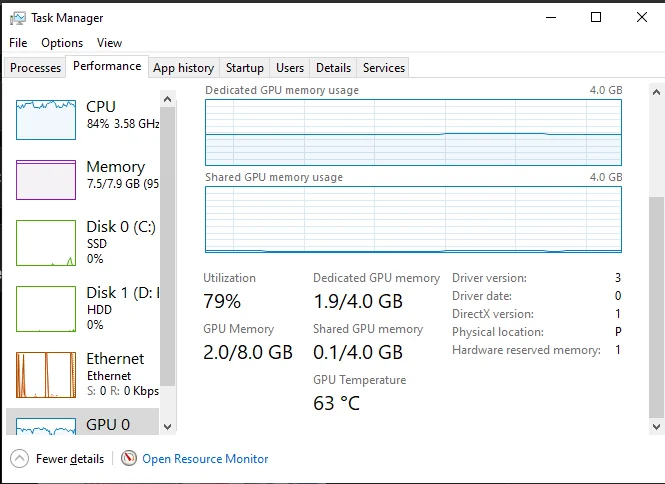
Understanding GPU Temperatures: Why 60°C May Not Be a Problem!
Many people worry about their GPU temperatures, but 60°C is well within the safe range for most modern graphics cards. GPUs are built to handle heavy workloads and can typically operate at temperatures as high as 85°C or more without issue. At 60°C, your GPU is running efficiently and performing as intended, especially during gaming or other demanding tasks. This temperature shows that your cooling system is doing its job, keeping the GPU at a stable and safe level.
That said, consistent monitoring of GPU temperatures is important for long-term performance and hardware health. While 60°C is safe, keeping your GPU cooler during idle or light usage can extend its lifespan and maintain peak efficiency. Simple practices like ensuring proper airflow in your PC case, cleaning dust buildup, and using reliable cooling solutions can help. In most cases, 60°C is nothing to worry about, but proactive care can prevent overheating in the future.
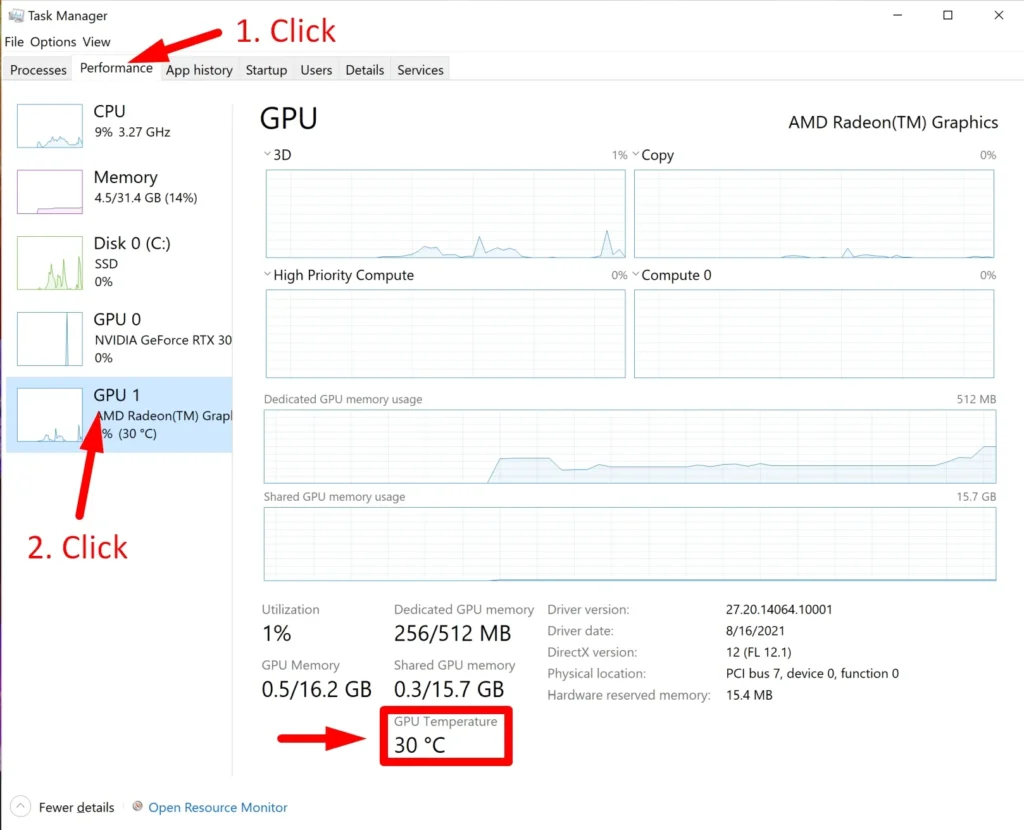
When Should You Worry About GPU Temperatures? Is 60°C Safe?
What Is a Safe GPU Temperature Range?:
GPUs are designed to handle heat, with most modern models able to operate safely up to 85°C or higher. A temperature of 60°C is well within this safe range, especially during gaming or heavy tasks. It shows that your GPU is performing efficiently without overheating, so there’s no need to worry about damage or performance issues at this level.

How to Keep Your GPU Cool?:
To maintain safe GPU temperatures, ensure your PC has good airflow by cleaning dust from fans and vents regularly. Check that your case is well-ventilated, and consider adding extra fans if necessary. Even though 60°C is safe, taking steps to optimize cooling can help keep your GPU running smoothly for years.
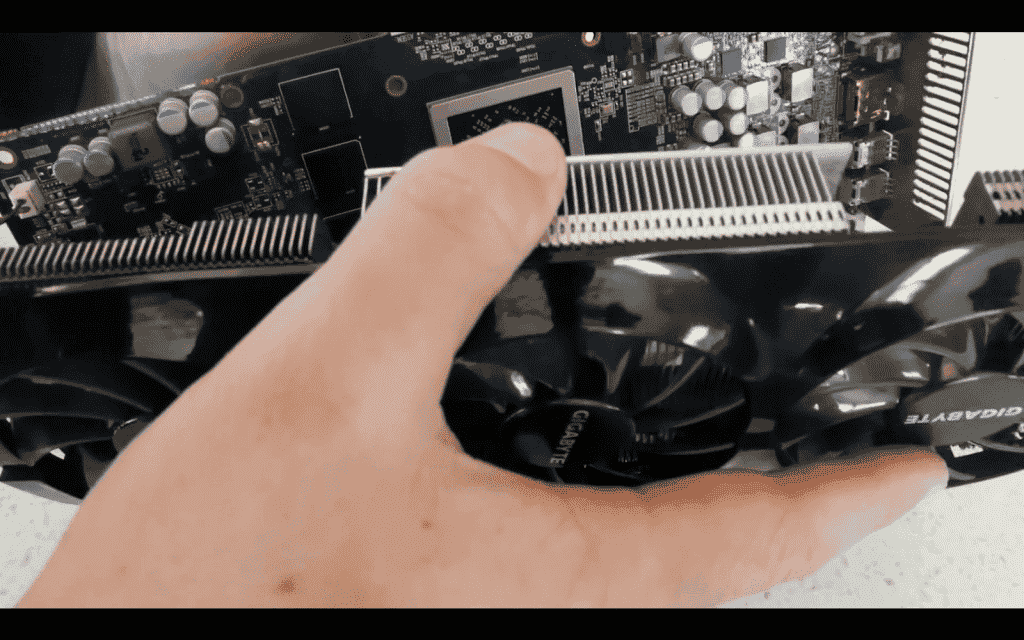
Why 60°C Is Not a Problem for Most GPUs?:
At 60°C, your GPU is running well within its designed limits, especially during moderate to heavy use. Manufacturers build GPUs to tolerate much higher temperatures, so this level isn’t a sign of any problem.
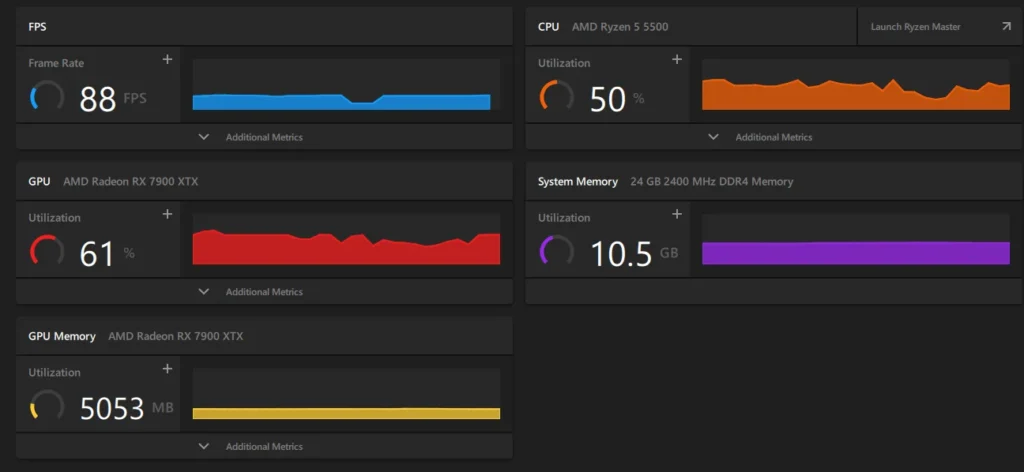
What Happens If Your GPU Reaches 60°C?
If your GPU reaches 60°C, it’s nothing to be concerned about. This temperature is well within the safe operating range for most modern GPUs, which are designed to handle temperatures up to 85°C or more. At 60°C, your GPU is likely performing demanding tasks like gaming, rendering, or running intensive applications. It’s a sign that your cooling system is working effectively to manage heat, ensuring the GPU operates efficiently without throttling or causing damage.
However, if your GPU consistently runs at 60°C during light tasks or idle periods, it could indicate insufficient cooling or poor airflow. Over time, sustained high temperatures can shorten the lifespan of components. To maintain optimal performance, ensure your PC has good ventilation, clean out dust regularly, and check that your cooling system is functioning properly. At 60°C, your GPU is perfectly safe, but keeping an eye on temperature trends can help avoid potential overheating issues in the future.
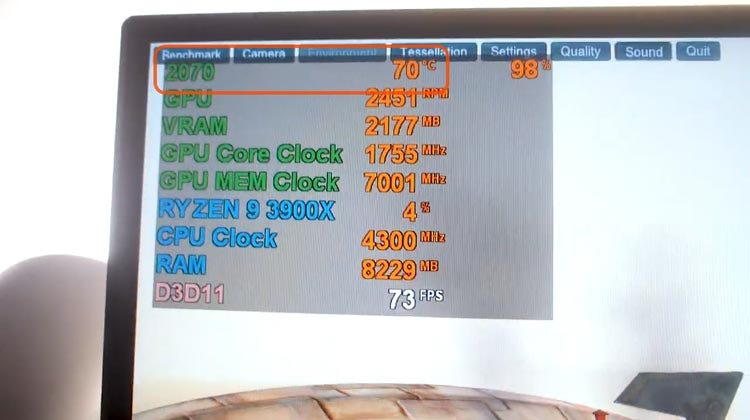
Why 60°C on Your GPU Is Typically Safe for Performance!
Why 60°C Is Normal for GPUs?:
- GPUs generate heat while performing demanding tasks like gaming or rendering.
- 60°C is common during moderate to heavy workloads and doesn’t harm performance.
- This temperature shows your GPU is running efficiently without risking damage.

Safe Temperature Range for GPUs:
- Most GPUs are designed to handle temperatures up to 85°C or higher.
- A GPU running at 60°C is well within this safe range.
- It indicates your cooling system is working effectively to prevent overheating.

When to Be Concerned About GPU Temperatures?:
- You should worry if the GPU consistently exceeds 85°C during heavy tasks.
- If it stays above 60°C during idle or light use, it may signal a cooling issue.
- Addressing airflow, cleaning dust, or upgrading cooling can resolve high idle temperatures.

Is 60°C Dangerous for a GPU? Debunking Common Misconceptions!
Many people worry about GPU temperatures, but 60°C is a safe level for most modern graphics cards. A common misconception is that GPUs should stay under 50°C, but in reality, graphics cards are built to operate well at temperatures up to 85°C or higher under heavy loads. Running at 60°C means your GPU is likely handling intensive tasks like gaming or rendering and is performing normally within this range. This temperature doesn’t pose a risk to the hardware and shows your cooling system is doing its job.
Another misconception is that frequent higher temperatures will immediately harm a GPU, but brief periods in safe temperature ranges, even above 60°C, don’t impact longevity significantly. Consistent cooling practices, such as maintaining good airflow and cleaning dust from your system, help ensure temperatures stay optimal. Overall, 60°C is not dangerous for your GPU; it’s a standard temperature during moderate to heavy use, proving your GPU is working effectively without any risk of overheating.

How to Monitor Your GPU Temperature: Is 60°C Considered Hot?
Monitoring your GPU temperature is simple and can help ensure your graphics card runs within safe limits. Tools like MSI Afterburner, HWMonitor, or even built-in software from GPU manufacturers let you track your GPU’s temperature in real-time. During intensive tasks such as gaming or rendering, it’s normal for your GPU to reach temperatures between 60°C and 75°C. At 60°C, your GPU is running efficiently and isn’t at risk of overheating, so it’s not considered hot.
However, consistent monitoring is important to detect unusual trends, like temperatures staying high during idle periods, which could signal cooling issues. If your GPU frequently exceeds 80°C, it may be time to check your system’s airflow, clean out dust, or upgrade your cooling solutions. While 60°C is not hot and is perfectly safe for most GPUs, keeping a close eye on temperature fluctuations ensures your hardware stays healthy and performs at its best.
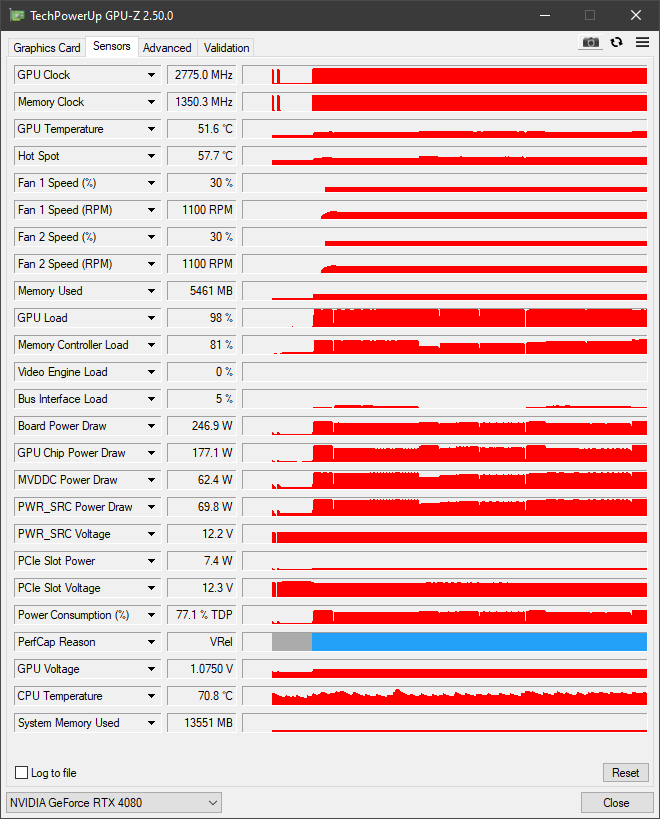
FAQs:
What is the normal temperature for a GPU during gaming?
A normal GPU temperature during gaming is between 60°C and 80°C. 60°C is actually on the cooler side for most modern GPUs under load.
Is 60°C too hot for a GPU while watching videos?
No, 60°C is safe even when watching videos. However, during lighter tasks, temperatures are usually lower, around 30°C to 50°C.
Can 60°C damage a GPU over time?
No, 60°C won’t damage a GPU. Most GPUs are designed to handle much higher temperatures without any long-term effects.
Is it normal for a GPU to reach 60°C in idle mode?
It’s not typical for a GPU to reach 60°C when idle. This could indicate poor airflow, dust buildup, or a software issue.
How can I lower my GPU temperature from 60°C?
You can lower the temperature by improving airflow in your PC case, cleaning dust from fans, or upgrading to a better cooling system.
Is 60°C hot for a GPU running heavy software like 3D rendering?
No, 60°C is a great temperature for GPUs running heavy software. It means the cooling system is working efficiently.
Should I adjust fan settings if my GPU reaches 60°C?
You don’t need to adjust fan settings at 60°C, but you can if you want even cooler temperatures for added peace of mind.
What happens if my GPU stays at 60°C all the time?
If your GPU stays at 60°C constantly, it’s not harmful, but it might indicate that the system is always under load or has cooling inefficiencies.
Do all GPUs have the same temperature range?
No, different GPUs have different thermal thresholds. Always check your specific model’s safe operating range to know what’s normal.
Can a laptop GPU safely run at 60°C?
Yes, 60°C is perfectly safe for a laptop GPU, especially since notebooks are designed to handle higher temperatures due to their compact size.
Final Words:
In conclusion, 60°C is not too hot for a GPU and is considered a safe operating temperature during gaming or other intensive tasks. Modern GPUs are built to handle much higher temperatures, ensuring efficient performance without risks of damage. However, maintaining proper cooling, cleaning your PC regularly, and ensuring good airflow can further optimize your GPU’s lifespan and performance.


